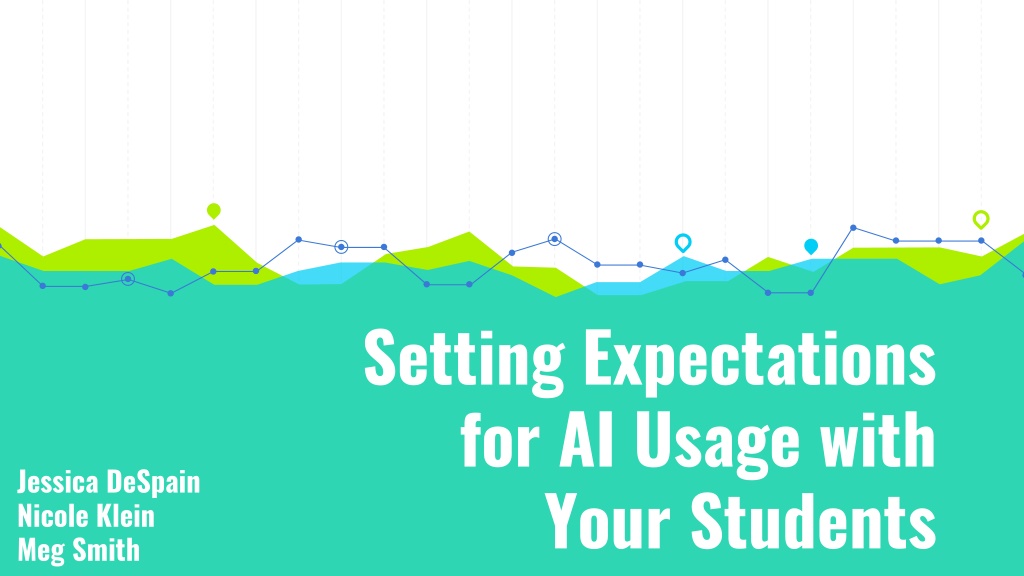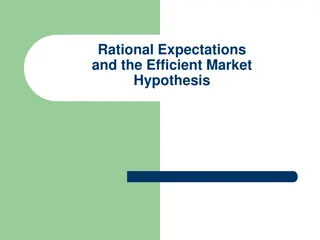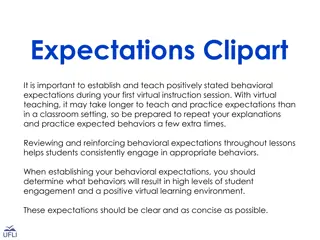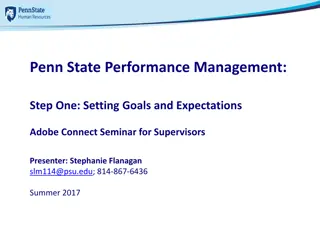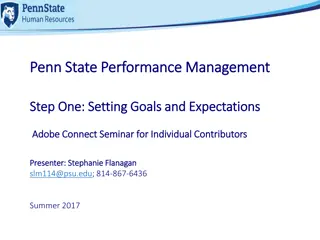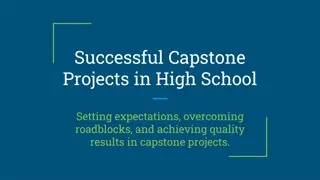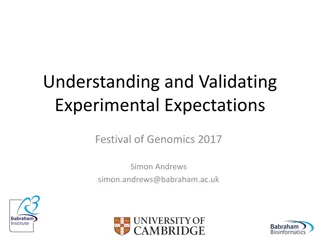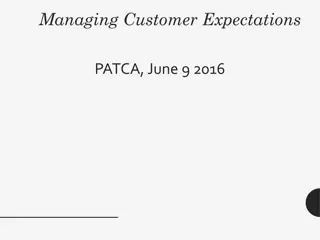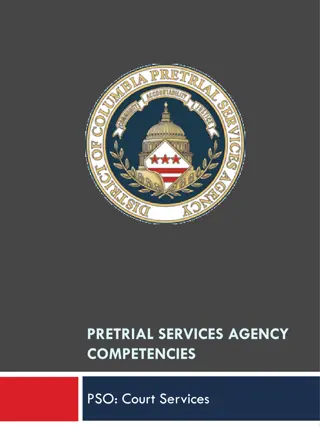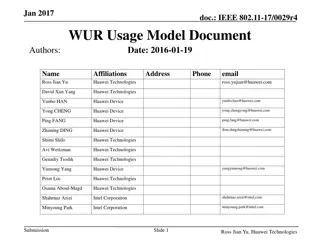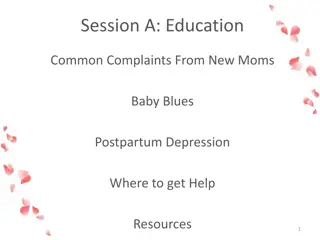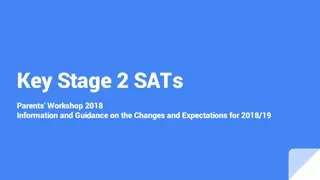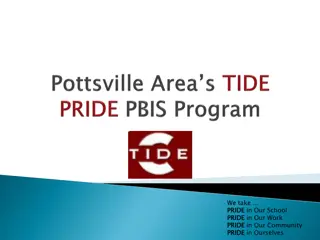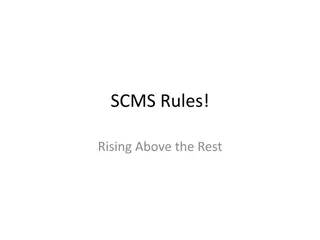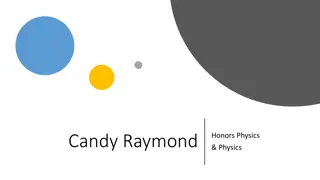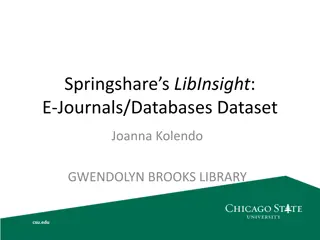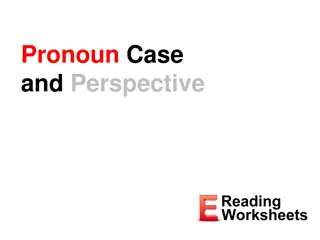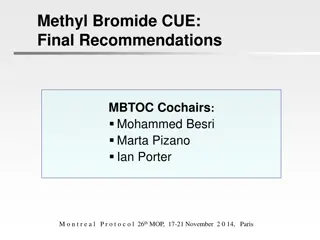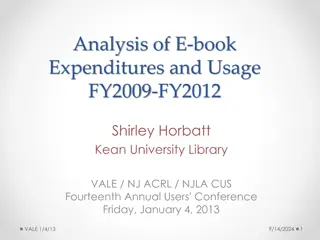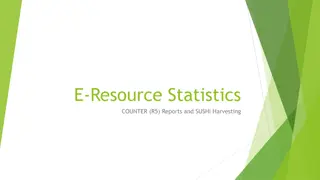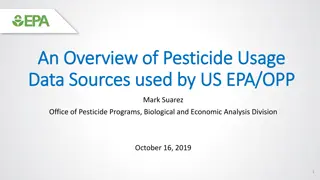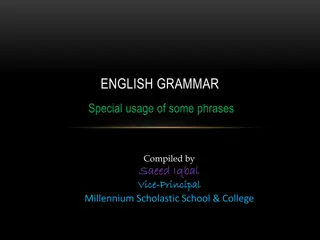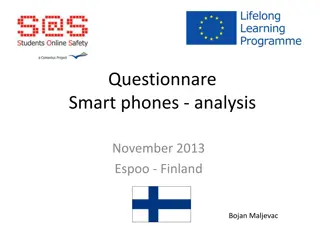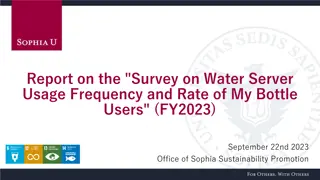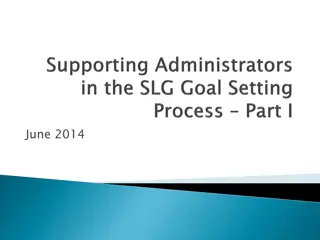Setting Expectations for AI Usage in Education
In this comprehensive guide, educators Jessica DeSpain, Nicole Klein, and Meg Smith delve into the importance of setting clear expectations for AI usage with students. The content covers defining AI, what AI can and cannot do, its applications in education, disciplinary differences, and strategies for aligning AI usage with course objectives. Valuable insights are shared on when and how to address AI in the syllabus, assignments, and assessments while promoting transparency and enhancing learning outcomes.
Uploaded on Oct 06, 2024 | 0 Views
Download Presentation

Please find below an Image/Link to download the presentation.
The content on the website is provided AS IS for your information and personal use only. It may not be sold, licensed, or shared on other websites without obtaining consent from the author. Download presentation by click this link. If you encounter any issues during the download, it is possible that the publisher has removed the file from their server.
E N D
Presentation Transcript
Setting Expectations for AI Usage with Your Students Jessica DeSpain Nicole Klein Meg Smith
included in the definition?1 Defining AI What is AI? What kinds of tools might be 2
What is AI? The science and engineering of making intelligent machines - John McCarthy (1955) 3
What is AI? The ability of machines to Identify patterns Perform tasks Make predictions 4
What is AI Not? AI struggles to Invent content from scratch Perceive, process, or feel emotions Hold ideas in tension Make complex, evidence-based arguments Humanize data and sources 5
What Can AI Do? Generate content ChatGPT GitHub Copilot Dall-E Bard Aid comprehension Youtube Summary Speechify Otter.ai Support research ResearchRabbit Semantic Scholar Give feedback PowerPoint Speaker Coach Grammarly Suggest design choices Canva Magic Adobe Sensei/Firefly Slidesai.io 6
Disciplinary Differences Sample syllabus statements 7
Discussion What have you been experiencing in the classroom with AI usage among students? 8
accountability, and assessment 2 Aligning AI Usage with Course Objectives Emphasizing process over product, authorial
When to Talk about AI With the Syllabus Be transparent with student about when, how, and why you permit or do not permit AI usage in your syllabus With Assignments Tell students what tools might be useful for their purpose; model its usage; show them what it gets wrong and what it gets right With Assessments You cannot detect AI, but you can often see its results; talk with students about their usage of AI and how it can help or harm their learning process 10
Define AI for Students Students may not know what tools count as AI Be clear about which tools you welcome them to use for which purposes Talk through the why of your policy and how it relates to course objectives Have students write their own AI statements (see Cate Denial s post: ChatGPT and All that Follows) 11
AI usage is ITERATIVE Asking Good Questions Revising the Product Refining Inputs 12
AI Can Come withEthical Pitfalls Content generated by AI is an amalgam of other sources, which the tool may or may not cite When AI does provide citations they can be fake or hallucinations Sometimes the data used to generate AI content is outdated The data used to generate AI may have embedded biases 13
Students should Cite and Describe AI Usage Most citation systems have recommendations for citing AI-generated content; they may include the prompt; student should prepare to document their process Students should describe their usage of AI in an acknowledgement statement or methods section Liza Long s Acknowledging and Citing Generative AI in Academic Work is a helpful resource 14
what circumstances?3 Spectrums of AI Policy Statements Prohibiting, allowed, or required, and under
AI Statement in SIUE Syllabus Template Unless expressly allowed by the instructor, the use of artificial intelligence (AI) tools and applications (including ChatGPT, DALL-E, and others) to produce content for course assignments and assessments is a violation of SIUE s academic policy and is prohibited. From https://www.siue.edu/its/idlt/toolkit.shtml 16
Discussion What AI usage do you permit/encourage/limit in your classes? 18
Spectrum of AI Policy Statements Prohibiting Mediating Prohibiting Mediating Encouraging See representative samples from Temple University s Center for the Advancement of Teaching. Encouraging 19
Steps Prior to Developing an AI Policy for Your Courses Discuss teaching approaches and unit-wide policies or practices with colleagues, department and unit leaders. Learn about the implications of AI tools for teaching and learning. Try out ChatGPT, Bard, or other free tools. 20
Resources for Writing Your AI Policy Curated AI resources on the Center for Faculty Development and Innovation website List of AI policy statementscurated by Lance Eaton, College Unbound. AI Forecasting Challenge created by Nicholas Carlini 21
Lets create Try out the AI Syllabus Statement Tool from Pepperdine University 22
THANKS! Any questions? You can find us at iriscenter@siue.eduor facultycenter@siue.edu 23
